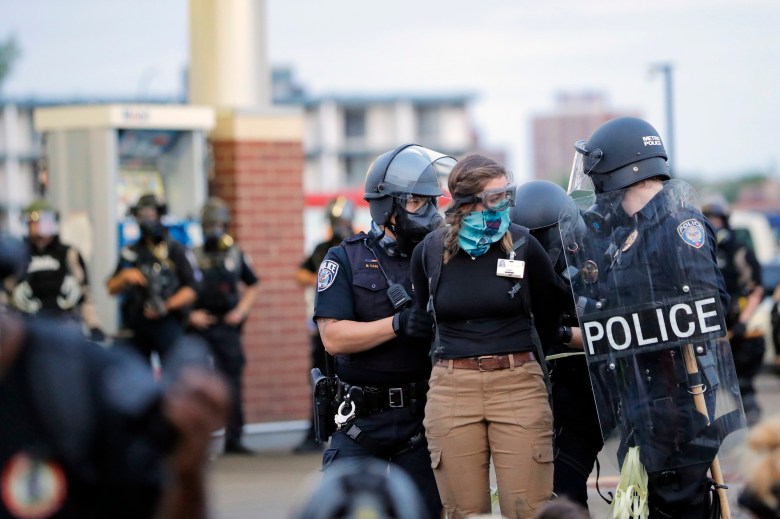

By Chief Joel F. Shults, Ed.D.
Police officers know the truth from the trash when we watch the news and what passes for news. Many who want to be supporters of officers do not have the information needed to make sense of the screaming headlines that bombard us hourly. How can we help our citizens, especially those who want to support quality law enforcement, be intelligent consumers of the news and not the noise?
- Understand that the media is easy to manipulate. Information on the internet is provided by profit seeking bloggers and websites that depend on page views and clicks. The old model of reporters digging to verify facts on a story before the paper is printed or a story is aired is a relic. When every click counts, information has to be pumped out and pumped up minute by minute. When a story – whether true or note and whether planted or not – is repeated enough times it is considered to be worthy of even mainstream media outlets. These stories can be generated with relative ease. Websites just need clicks and views, so it is no great loss if a reader grabs only the headline and does not read the story. Headlines can be intentionally deceptive in order get attention and clicks.
- Watch for phrases that hedge the truth of a story: “It has been reported that”, “anonymous sources say”, “a possible violation”, “a potentially explosive allegation”. Phrases like that really mean “we have no idea whether this is true but we’re putting it out there anyway”.
- There are lies, damn lies, and more damn lies using skewed statistics. One social media post rhetorically asks why cops have killed hundreds and rioters only a few, implying that the real source of violence is the police. If you want to compare full time first responders who are called into violent situations on a regular basis to weekend warrior rioters, those numbers are meaningless. Be skeptical of comparisons, pieces of charts and graphs, and the trustworthiness of the source of statistics.
- Examine the heroes and victims cited by speakers and writers. If anyone cites the death of Michael Brown as the murder of an unarmed teen by a racist cop, they immediately lose credibility. Multiple investigations, intense public scrutiny, and physical evidence all yield the same factual answers. Brown was leaving the scene of a strong armed robbery, assaulted the officer and attempted to steal the officer’s sidearm breaking bones in the officer’s face, then resisted arrest as the officer pursued him. This is in no conceivable way an unjustified use of force, not to mention that the “hands up don’t shoot” mantra has been proven to be entirely fiction.
Those citing the death of Trayvon Martin often don’t know that this was not a police involved death at all. Neither was the death of Armaud Arbery. When lists of alleged victims of police violence are published, a search of the circumstances will show that most were armed, fleeing violent crimes, actively resisting arrest, or in the company of those who were. That is not to diminish or justify the statistically rare unlawful use of force by police, but with every deadly force event being portrayed as a cascade of senseless killings, the truth of these encounters must prevail.
- Watch for terms that are loaded with presuppositions. Reporters like to talk about military grade equipment instead of protective gear or tactical rescue vehicles. The word murder should not be used in every report of a death in police custody. Saying that an arrest was only for a misdemeanor is intended to strongly imply that the suspect’s encounter with police was a trifle to begin with. Eric Garner’s contact and arrest was for selling untaxed cigarettes, an activity associated with gangs and organized crime. The investigation of George Floyd began with a reported counterfeit $20 bill, a federal offense also associated with underworld criminal activity. Whether the outcome was unlawful conduct by the arresting officers was criminal or not, the initial contact and of these offenders was lawful.
Another term is unarmed, meant to imply that the arrestee posed no threat. It takes only a quick look at FBI murder statistics to see that twice as many people are killed by hands, feet, and hastily grabbed blunt objects than all murders from rifles and shotguns combined. Knives are often referred to as a non-deadly threat but are also more than twice as likely to kill as rifles and shotguns combined. Presidential candidate Biden famously suggested how an officer should be trained if “there is an unarmed person coming at them with a knife or something”.
- Look for context and irrelevant factors. Bloggers and more traditional reporters often create sympathy for those shot by police, alluding to their impending college enrolment, recent graduation from rehab, charitable work, families, and birthdays. Officers facing deadly force decisions calculate only the threat, not the personality or life circumstances of the person engaging in the threat.
When citizens develop a better understanding of how to filter the information they get, the reforms that truly are urgent in policing can begin.